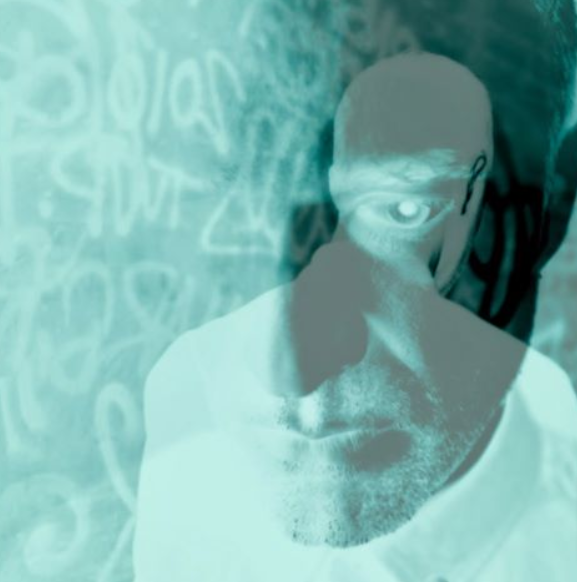Sounds of transformation: Eomac’s arabic and islamic musical exploration
This post was written by admin

In the summer of 2016, the avant-garde musical landscape witnessed a remarkable fusion of cultures and sounds, all emanating from the visionary minds behind Bedouin Records. They unleashed a groundbreaking double album by none other than Ian McDonnell, better known as Eomac and a prominent member of the renowned Lakker. What began as a humble concept from the Dubai-based label soon transformed into a monumental project that would resonate across continents and genres.
The label’s initial idea was simple yet profound: provide McDonnell with a treasure trove of music hailing from the rich tapestry of the Arabic and Islamic worlds, serving as both inspiration and source material for his sonic alchemy. What transpired from this endeavor was nothing short of extraordinary. McDonnell embarked on a musical journey, crafting over 30 tracks that wove together elements of “Moroccan street music, songs from Baghdad, Islamic music from India, Sufi ceremonies,” each layer enriched by detailed notes on the instruments used and the profound meanings and cultural contexts that infused every source.
But the story doesn’t end there. As the post-production phase unfolded, Ian McDonnell crossed paths with Ricardo Soto, a young and visionary film director who would become an integral part of this creative odyssey. Together, they embarked on a cinematic journey, resulting in the creation of two official videos for the album. One of these films has now been unveiled to the public, serving as a captivating visual companion to the music in these times of profound global transformation.
TF: Those of us who are followers of your music, received the good news in 2016 of your length album signed in Bedouin Records. We also know about your broad release history, what makes this album of “Bedouin Trax” different? Do you had a particular method while worked in the studio?
Eomac: This particular album was different for me in that it came about from an invite from the label. They sent me a load of samples and invited me to make an album from them. The samples were all of folk and spiritual music from the Islamic and Arabic worlds. I dissected the samples, isolated individual sounds and loops and then created the album using those, and only those, as materials. It was super inspiring as the source material was so beautiful. In the course of it I wrote many tracks, 10 of which were released as Bedouin Trax, and there are more forthcoming in Bedouin Trax Pt.2 which is in the works.
TF: What is your relationship with visual arts as a artist and as an individual? moreover, could you talk about your favourite art works or even a particular art movement that inspires you?
Eomac: I have always had an on / off relationship with the visual arts. As a child and teenager I drew and painted a lot and I wanted to be a visual artist at one point. But as I grew music took over and I neglected visual art in a way. But recently I have reconnected with it through the making of music videos (Temple of the Jaguar for example) and an AV show for my ‘Reconnect’ album, collaborating with Sal Stapleton to realise the vision. So I’ve reintegrated visual art into what I do in some way, though music is still my main focus and means of expression.
There is no particular movement that inspires me nor do I have favourite artworks. There is a lot that inspires me but as with music (or any other art) the things that inspire me are a sense of authenticity / honesty of expression or an individual voice expressing something truthful about themselves rather than styles or movements. In personal truth lies universal truth and I always find that idea inspiring. Recently I found Yves Klein’s ‘Monogolds’ very interesting (I’d never seen them before) and I watched a documentary on Yayoi Kusama that was super inspiring.
Ricardo Soto: In my everyday life, I try not to make an actual difference between individual and creator, I just try to be receptive by observing the images offered by life itself. Our daily lives are rich in textures, landscapes, beings and forms that through our eyes may become transcendent and potential motives for creativity. As I see it, visual arts –and art in general— are the nourishment for a deep meaning of existence.
Surrealism is one of my favourite art movements; undoubtedly, a great source of inspiration. Its free association of subconscious elements faces us with symbols and concerns that lie at the bottom of our imagery. It is the movement that quintessentially honours our “irrational” side, and many times it shows us unknown facets of ourselves, maybe even more accurate facets of who we think we are.
TF: Can you tell us more about the conceptual link between human and natural order and the different media developed throughout the project?
Ricardo Soto: Each one of us conceives the experience of life in a unique way. When we think of the human in front of the natural, we might feel part of an extraordinary and unrepeatable event; at the same time, we are reduced to insignificance and ephemerality. Each mind is a micro-universe. A portrait aims to express the essence of a particular person’s cosmos, therefore creating a perpetual record and turning the person into an enigmatic experience, capable of triggering in the observer questions originated from a powerful gaze or a specific face.
The media developed for this project were simple. We had two days of filming in which we conducted an exhaustive search through fragmented expression built by Eomac, facets and states that intertwined to project the character of that particular moment.
TF: And last but not least, could you tell us a bit more about your future projects?
Eomac: Lots of work incoming. As mentioned above there is Bedouin Trax Pt.2 dropping on Bedouin Records in the near future. I also have an EP with an amazing MC that will be announced really soon, another conceptual EP based on field recordings which will be announced with the first single this summer, an album in the works for end of this year / start of 2021 for which I’ll develop a new AV show and a tape release under a new pseudonym ‘OMIC’ on the label Forgot Imprint also coming this summer.
Also, there’s new work on the way from Lakker and other collaborations Lena Andersson and noeverything. There’ll be some new releases on Eotrax soon too.
Ricardo Soto: At the moment, I find myself more focused on cinematographic projects. I am about to finish the post-production of my first feature film, “El canto de las moscas” (The Singing of the Flies), a fiction that talks about the metaphor of darkness in the time of the Mexican Revolution. I am also on the process of writing two more feature films that are intimately related to music. The first one takes place within the field of classical music, and it’s a questioning of the abilities of human memory. The other one will be inspired by some aspects of the Techno scene, the starting point being an essay about the concept of “happiness”. On the other hand, I don’t rule out the idea of working on future collaborations in the music world if they allow me to continue my visual experimentation.
TF: To say goodbye, what can you tell us about the video premiere you publish with us? Any experience during the creative process? Why “Portriat” track?
Eomac: Ricardo came to me with the idea after we had met in Berlin. He was shooting the video for Demian Licht’s ‘Domina’ at the time and after that he proposed we shoot a video for one of my tracks. He wanted to do it in a different way though. Instead of shooting a traditional music video he suggested we do it as an artist portrait soundtracked by my music. We chose the track ‘Entrance’ which is the opener of Bedouin Trax as I had just released that album and that track in particular resonated with Ricardo and he had very clear ideas of how he interpreted it visually, which in turn resonated with me.
It was a fun experience to shoot. We spent the day at Teufelsberg in Berlin shooting different expressions of my face and body to reflect the moment and the music.
Ricardo Soto: Eomac’s “Portrait” was born in a free and spontaneous way, after we met in Berlin in 2016 through Demian Licht. We decided to work together to carry out this audiovisual exploration, starting from improvisation but also taking the concept of “balance” as the core. I remember we gathered before the recording, and I told Ian how the track “Entrance”, in the Bedouin Trax album, triggered in my mind the image of something cyclical and of the abstraction of harmonious states. That could be our joint search for the video’s visual plane.
I could say that, for me, Eomac’s music has the perfect balance between light and darkness, it elicits unthinkable and extraordinary landscapes. From the first moment you listen to him, you plunge into a deep state that may lead you to confront yourself.
Music – Eomac – “Entrance” / Bedouin Trax
Director, Cinematographer & Editor – Ricardo Soto
Cast – Ian McDonnell
Production Assistant – Pedro de Santiago
Production Company – Migala Films
Label – Bedouin Records
Country – United Arab Emirates, Germany, Mexico, Ireland.
